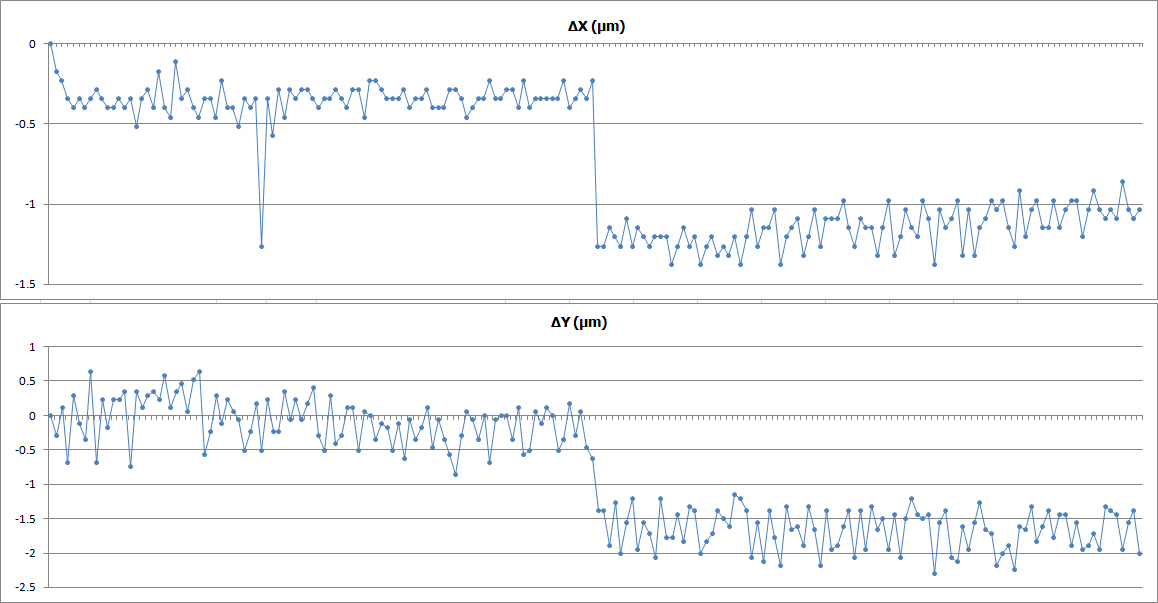Relocation
repeatability tests were performed on Olympus BX51 microscope using a custom
calibration slide with patterns created by metal vapor-deposition. Objective - UPlanFL 10X/0.30, camera - Canon 40D mounted in primary image plane (no relay
lens). The camera was connected to computer with USB cable and controlled by
Canon Utility program. During acquisition the camera was set in Live View mode. Pixel size with this setup was 0.575
μm. Relocation target was a pattern of
32μm*32μm
squares shown in the picture. Tests were performed with 36V power supply after
the system has been turned on for about one hour. Stage movement and overall
control was done by the following script written in the
ScopeTool interpreted language:
XY Home ; XY Wait ;
Repeat 100 Times
XY 7000 25000 ; XY Wait ; ! Top
Left Parking Position ;
XY 12000 30000 ; XY Wait ; ! Target Position ;
Snap ; Delay 4000 ;
! Target Image Approached from Top Left ;
Endrepeat
Repeat 100 Times
XY 17000 35000 ; XY Wait ; ! Bottom Right Parking Position ;
XY 12000 30000 ; XY Wait ; ! Target
Position ;
Snap ; Delay 4000 ; ! Target Image
Approached from Bottom Right ;
Endrepeat
The target position was
randomly chosen in the field of squares. The relocation sequence consisted of
two parts: approaching the target position from top left and approaching the
target position from bottom right; each repeated 100 times. The move to target
position was from 5 mm afar in X and Y with speeds 24 mm/s in X and 48 mm/s in Y
and acceleration 950 mm/s2 in both X and Y. (Distance numbers in the
script are in microns and time is in milliseconds). This method of testing
relocation in our view is closer to the real usage of a stage in a microscope
system than testing X and Y axes individually. The measured errors in this case
include both on-axis and off-axis errors of the stage.
Camera control in the script (the Snap command) was achieved by sending key strokes to the Canon Utility program, that correspond to the shutter release and waiting for the image transfer to complete. Some of the key strokes were lost and the total number of collected images is slightly smaller than 200.
Assessment of relocation was done with a purpose-written software that calculated shifts between images with sub-pixel accuracy (0.1 of pixel size). Relocation errors from individual repetitions of the test recalculated in microns are given by the following plots. Backlash was calculated as the difference between average values in top-left and bottom-right series. Unidirectional repeatability has two numerical measures: maximal deviation from the average and standard deviation multiplied by 3.


Home > Motorized Stage with Integrated Controller > Relocation Repeatability